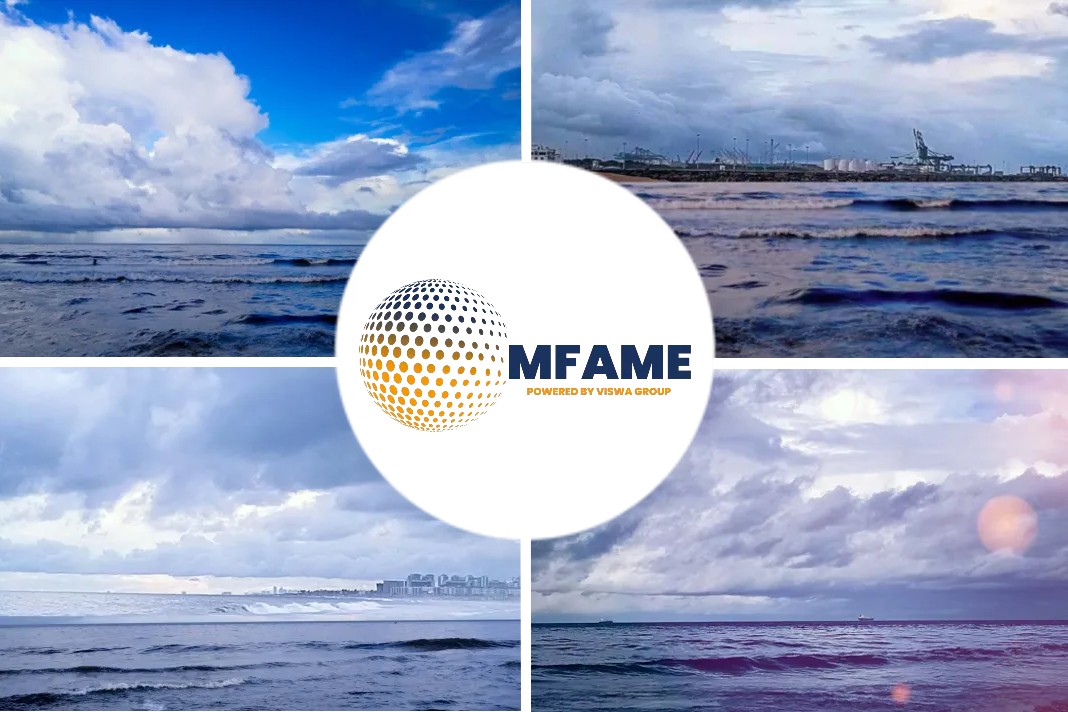- Singapore is now able to provide liquefied natural gas (LNG) bunkering to larger LNG-powered vessels.
- This is attributed to the launch of the first ship-to-containership bunkering operation in Asia on Wednesday.
- The bunkering operation involving the containership CMA CGM Scandola and Singapore’s first LNG bunkering vessel, the FueLNG Bellina, began around 4am on Wednesday.
- The operation to transfer 7,100 cubic metres (cu m) of LNG to the containership is expected to be completed on Wednesday night.
Leila Lai writes for the Business Times about the first ship-to-containership LNG bunkering operations launched in Singapore.
FueLNG Bellina
FueLNG Bellina is owned by FueLNG, a joint venture between Keppel Offshore & Marine (Keppel O&M) and Shell Eastern Petroleum.
It has a capacity of 7,500 cu m of LNG, or the equivalent of about 300 trucks used for truck-to-ship LNG bunkering operations.
With the capability to conduct ship-to-containership bunkering, Singapore is now able to provide bunkering to larger LNG-powered vessels like the 15,000 TEU (twenty-foot equivalent unit) CMA CGM Scandola.
CMA CGM Scandola
The bunkering ship also makes it possible to complete bunkering within the window of container loading and discharging, which will shorten ships’ port stay time.
The execution of these operations for the CMA CGM Scandola marked the first time such operations have been conducted simultaneously in Asia.
300 truck-to-ship LNG bunkering operations
At an event marking the launch of the bunkering operations on Wednesday, Chris Ong, chairman of FueLNG and chief executive officer of Keppel O&M, shared that FueLNG has completed more than 300 truck-to-ship LNG bunkering operations in Singapore.
“With the commencement of ship-to-ship LNG bunkering in Singapore this year, we anticipate that the annual LNG bunkering volumes can increase by about 80 to 90 times,” he said.
Senior Minister of State for Transport and Foreign Affairs Chee Hong Tat, who also attended the launch, noted that LNG is one step in the transition to meeting targets set by the International Maritime Organization to cut greenhouse gas emissions by at least 50 per cent by 2050, compared to 2008 levels.
LNG reduces 99 per cent for sulphur dioxide
LNG offers reductions of 99 per cent for sulphur dioxide, 91 per cent for particulate matter emissions and 92 per cent for nitrogen oxide emissions compared to traditional marine fuels.
LNG-powered vessels also emit up to 20 per cent less carbon dioxide than conventional marine fuel-powered systems.
A Shell LNG Outlook
A Shell LNG Outlook report in 2020 estimated global LNG bunkering demand to grow to 30 to 50 million tonnes per annum (MTPA) by 2040.
Currently, about 400 LNG-fuelled vessels are in operation or on order, resulting in an expected demand of nearly 3.5 MTPA of LNG as marine fuel.
Singapore is a new addition to Shell’s current global LNG bunkering network of eight countries and nine ports, said Tahir Faruqui, director of FueLNG and head of Shell Downstream LNG.
Did you subscribe to our daily newsletter?
It’s Free! Click here to Subscribe!
Source: The Business Times























